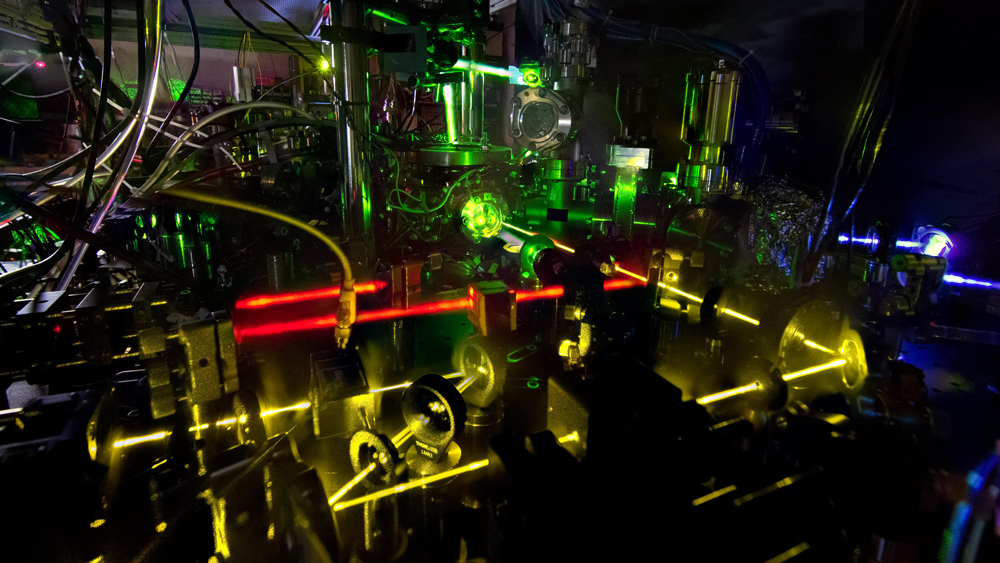One of NIST’s ytterbium lattice atomic clocks: NIST physicists combined two of these experimental clocks to make the world’s most stable single atomic clock. The image is a stacked composite of about 10 photos in which an index card was positioned in front of the lasers to reveal the laser beam paths. Credit: N. Phillips/NIST
Time: We all have a sense of it, an innate feel for it. We see it and use it every day. If you’re like me, the first thing you do in the morning is check the time on your phone to see if you need to get out of bed or if you can close your eyes and catch a few more z’s.
|
ADVERTISEMENT |
Once you’re up and moving, time dictates when and what you eat, when you leave and come back to your house, and countless other activities.
Yet, if you’re like me (before I took a job at NIST), you might not have thought too much about where the time on your phone comes from. We tend to take time for granted.
During the past year, I’ve been working on a website about atomic clocks, one of NIST’s claims to fame and contributions to the world. This project has given me a lot of, ahem, time to think about time. And what I’ve realized is that pretty much everything I thought I knew about time, I didn’t really know.
Time, it turns out, is a far more profound, subtle, unstable—and fascinating—concept than I had ever appreciated.
…

Add new comment